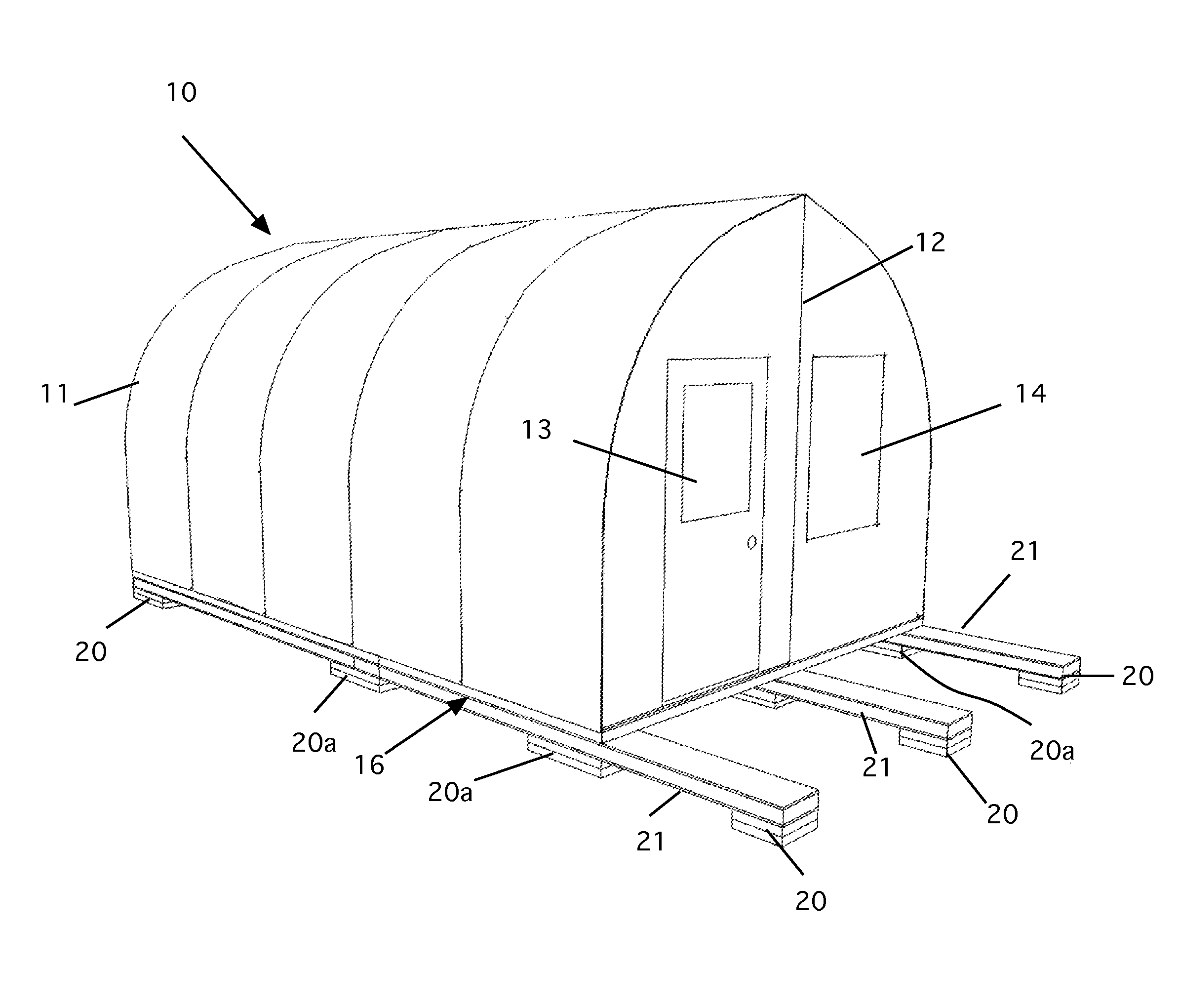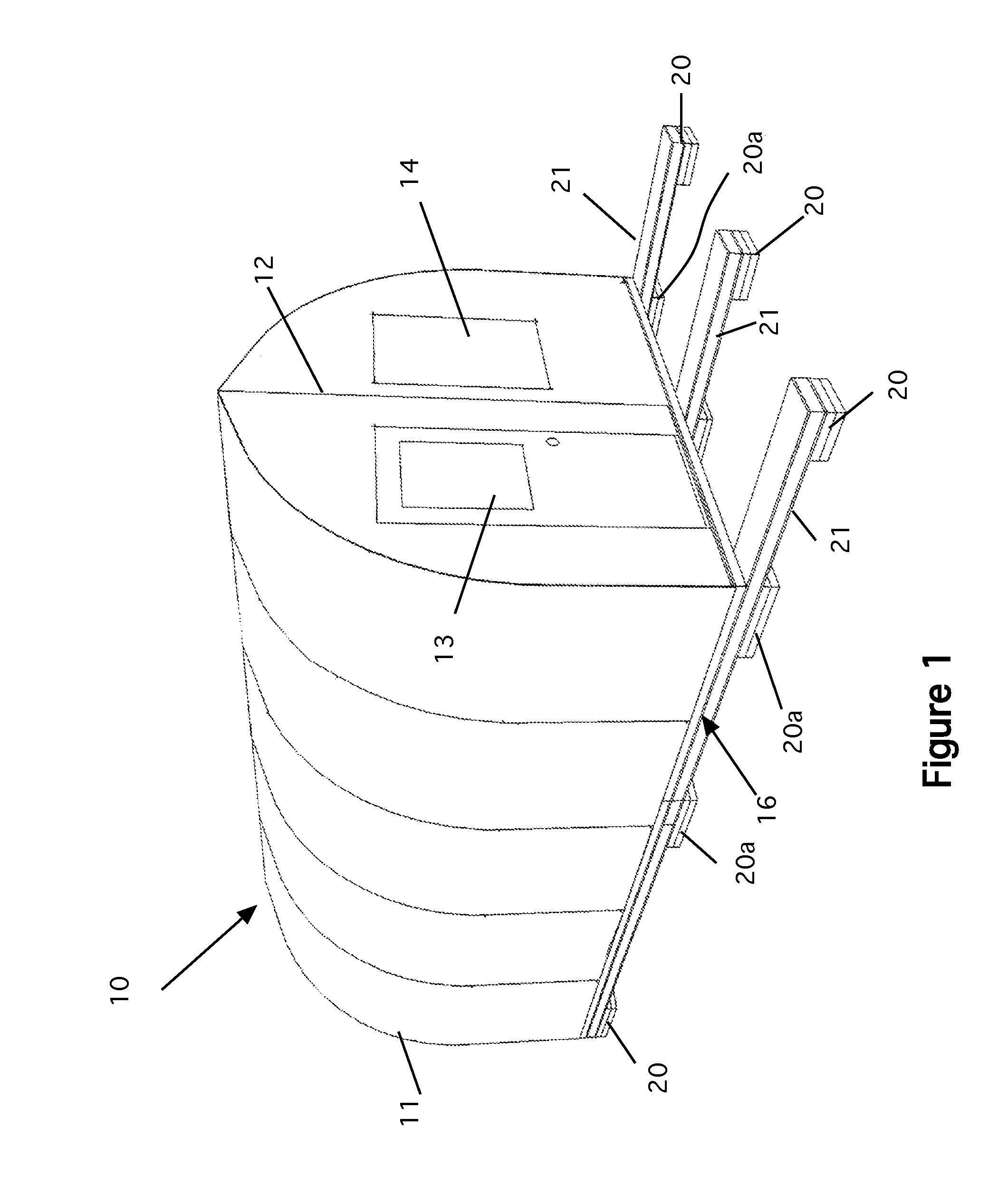Panelized portable shelter
a portable shelter and panel technology, applied in the field of portable shelters, can solve the problems of tents, many problems, and inconvenient use, and achieve the effect of avoiding damage to tents, and being comfortabl
- Summary
- Abstract
- Description
- Claims
- Application Information
AI Technical Summary
Benefits of technology
Problems solved by technology
Method used
Image
Examples
Embodiment Construction
[0031]Referring now to FIG. 1, a front perspective view of the assembled invention is shown. The invention 10 is a but made of preformed wall panels 11, end panels 12, which includes a door 13 and a window 14, a floor 15 (see FIG. 5), and a foundation 16. As noted above, the shelter is 12 feet by 20 feet long.
[0032]Beginning at the bottom of the unit, FIG. 2 is a detail of the foundation, which is also shown in FIG. 1. The foundation 16 is made up of a set of base pads 20 and 20a that are foam pier pads made of high-density foam—40 pounds per square inch. There are 3, 2′×1′ pads 20 at building ends and support plank junctions and 3, 1′×1′ pads 20a at centers of the support planks and at the front edge of the front deck (not shown). There will be a minimum of 6″ of pads supplied at each point. At each pier pad location there will be one pad that has been hot wire cut on a diagonal to allow height adjustment. The worker only has to clear vegetation and level the subsoil prior to place...
PUM
 Login to View More
Login to View More Abstract
Description
Claims
Application Information
 Login to View More
Login to View More - R&D
- Intellectual Property
- Life Sciences
- Materials
- Tech Scout
- Unparalleled Data Quality
- Higher Quality Content
- 60% Fewer Hallucinations
Browse by: Latest US Patents, China's latest patents, Technical Efficacy Thesaurus, Application Domain, Technology Topic, Popular Technical Reports.
© 2025 PatSnap. All rights reserved.Legal|Privacy policy|Modern Slavery Act Transparency Statement|Sitemap|About US| Contact US: help@patsnap.com



